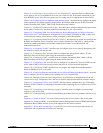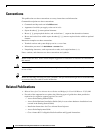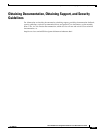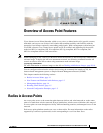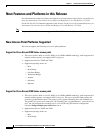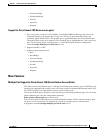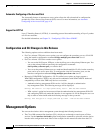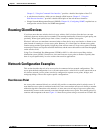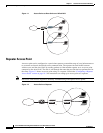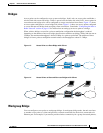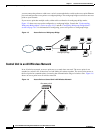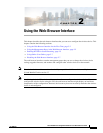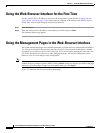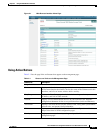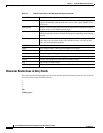
1-5
Cisco IOS Software Configuration Guide for Cisco Aironet Access Points
OL-30644-01
Chapter 1 Overview of Access Point Features
Roaming Client Devices
Chapter 3, “Using the Command-Line Interface,” provides a detailed description of the CLI.
• A web-browser interface, which you use through a Web browser. Chapter 2, “Using the
Web-Browser Interface,” provides a detailed description of the web-browser interface.
• Simple Network Management Protocol (SNMP). Chapter 18, “Configuring SNMP,” explains how to
configure the wireless device for SNMP management.
Roaming Client Devices
If you have more than one wireless device in your wireless LAN, wireless client devices can roam
seamlessly from one wireless device to another. The roaming functionality is based on signal quality, not
proximity. When signal quality drops from a client, it roams to another access point.
Wireless LAN users are sometimes concerned when a client device stays associated to a distant access
point instead of roaming to a closer access point. However, if a client signal to a distant access point
remains strong and the signal quality is high, the client will not roam to a closer access point. Checking
constantly for closer access points would be inefficient, and the extra radio traffic would slow throughput
on the wireless LAN.
Using Cisco Centralized Key Management (CCKM) or 802.11r, with a device providing wireless
distribution system (WDS), client devices can roam from one access point to another so quickly that
there is no perceptible delay in voice or other time-sensitive applications.
Network Configuration Examples
This section describes the role of an access point in common wireless network configurations. The
access point default configuration is as a root unit connected to a wired LAN or as the central unit in an
all-wireless network. Access points can also be configured as repeater access points, bridges, and
workgroup bridges. These roles require specific configurations.
Root Access Point
An access point connected directly to a wired LAN provides a connection point for wireless users. If
more than one access point is connected to the LAN, users can roam from one area of a facility to another
without losing their connection to the network. As users move out of range of one access point, they
automatically connect to the network (associate) through another access point. The roaming process is
seamless and transparent to the user. Figure 1-1 shows access points acting as root units on a wired LAN.



